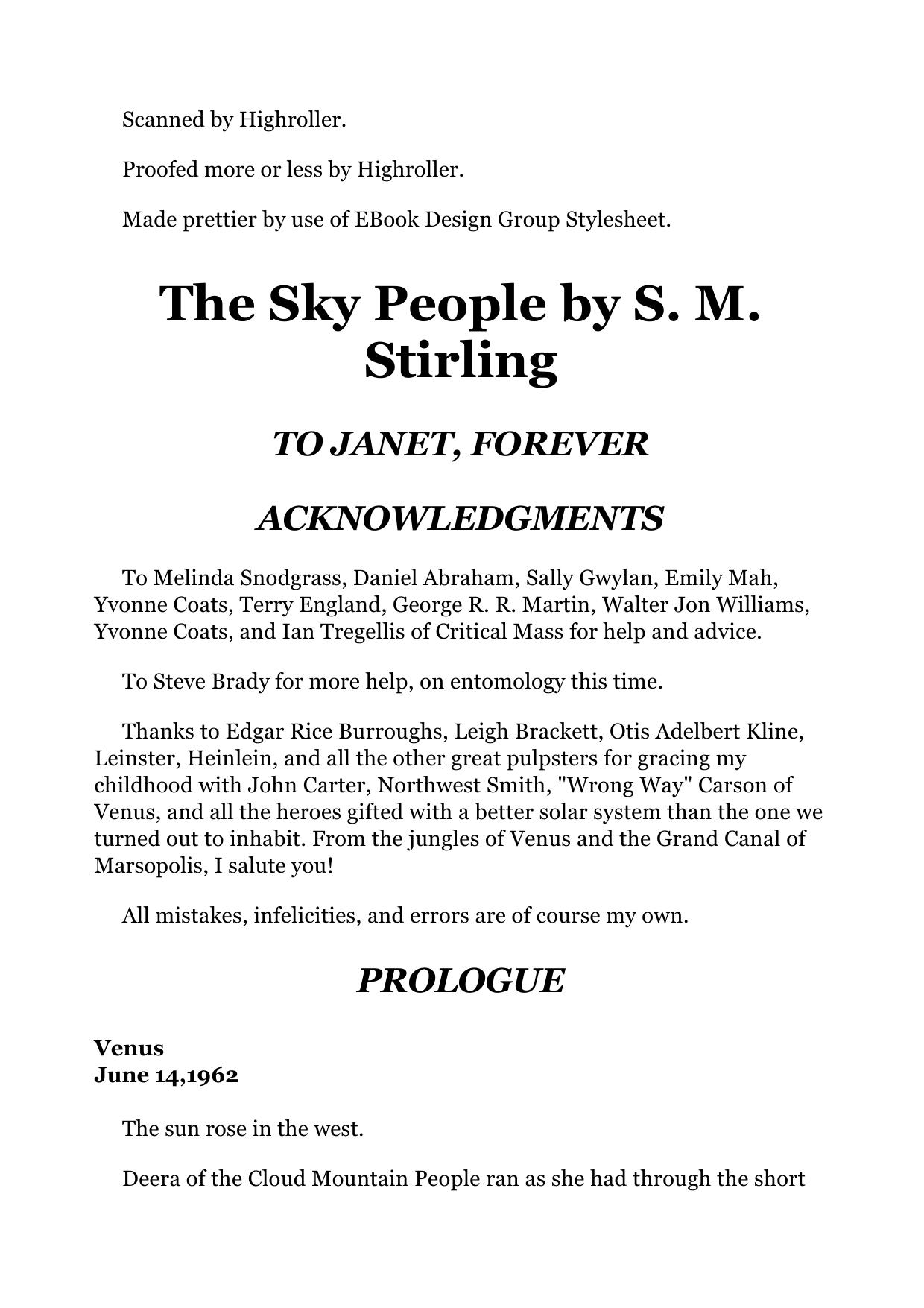S. M. Stirling - The Sky People by S. M. Stirling

Author:S. M. Stirling
Language: eng
Format: epub, pdf
CHAPTER EIGHT
Encyclopedia Britannica, 16th Edition University of Chicago Press, 1988
SPACE RACE: Implications for Earth
As the twentieth century enters its last decades, it has become increasingly clear that our focus on space has fundamentally reshaped our life on Earth as well. Most obviously, the knowledge that we were not alone in the universe has had a profound effect on Earthly philosophy, religion, and culture, compounded by the discovery via space-based telescopes in the 1970s that Earth-like planets with oxygen-rich atmospheres are common in nearby star systems. Technologies developed for the space effort shape our lives; increasingly, manufacturing in and energy from space affect the global economy.
However, the discoveries which began in the 1950s have affected us not only through increased scientific knowledge and technological spin-offs, but also through the shaping of national rivalries. Few now remember how real the threat of another global war was in the 1950s, or how serious conflicts on the periphery of the blocs remained as late as the early 1960s.
Many contemporary analysts credit the Space Race, as much as nuclear weapons themselves, with breaking the twenty-year cycle of the World Wars.
The knowledge that life existed on both Mars and Venus prompted increased research spending, but proof in the early 1960s that human life existed on both planets made interplanetary travel a matter of maximum priority. As the 1960s wore on, spending on research, development, and deployment of space systems gradually came to match and then exceed that of the military budgets of the two great power-blocs.
The deaths of the two Communist dictators Joseph Stalin (1953) and Mao Tse-tung (1956) and their replacement by the relatively reformist regimes of Khrushchev and Chou En-lai assisted the deterrent effect of thermonuclear weapons and ICBMs in the reorientation of EastBloc policy away from direct military confrontation and into competition for space, under the slogan Proletarians of All Worlds, Unite!
Paradoxically, the increasingly severe competition to establish a presence in space and on Earth's sister-worlds led to increased pragmatism and cooperation on Earth itself, where both major blocs desired no distractions. Among the first fruits was the peaceful settlement of the Quemoy-Matsu island dispute in 1958. The USA/UK/USSR/PRC
demarche which imposed the Treaty of Nicosia on the parties to the last Arab-Israeli war in 1967, and the inter-bloc peacekeeping force which enforced it, were among the most spectacular. The Middle East, a scene of instability throughout the nineteenth century and into the postwar period, became a sleepy backwater.
Similarly, the ever-closer integration of British Commonwealth and United States foreign policy after the joint intervention in the Suez Crisis (1956) received another major boost when the United Kingdom agreed to merge its space efforts with those of the USA in 1961.
More controversially, some scholars attribute the increasing neutralism of Gaullist France and its close European allies Italy and West Germany (and Spain, after the fall of the Franco regime in 1968) to the waning of the threat of invasion from the East. In recent years, the European Union, as this alliance has come to be known, has embarked on space efforts of its own.
Download
S. M. Stirling - The Sky People by S. M. Stirling.pdf
This site does not store any files on its server. We only index and link to content provided by other sites. Please contact the content providers to delete copyright contents if any and email us, we'll remove relevant links or contents immediately.
We Ride Upon Sticks by Quan Barry(33289)
The Secret History by Donna Tartt(16627)
Norse Mythology by Gaiman Neil(11883)
Crooked Kingdom: Book 2 (Six of Crows) by Bardugo Leigh(11289)
The Betrayed by Igor Ljubuncic(11223)
The Betrayed by Matthew Dickerson(11064)
Caraval Series, Book 1 by Stephanie Garber(9046)
Year One by Nora Roberts(8475)
Oathbringer by Brandon Sanderson(8458)
The City of Brass by S. A. Chakraborty(7767)
The Priory of the Orange Tree by Samantha Shannon(7341)
Red Rising by Pierce Brown(7326)
Confessions of an Ugly Stepsister by Gregory Maguire(7204)
Twilight Siege: A Dark Fantasy Novel (The Fae Games Book 2) by Jill Ramsower(6275)
Shalador's Lady by Anne Bishop(6223)
Little Fires Everywhere by Celeste Ng(6140)
Storm and Silence by Robert Thier(5892)
Shadows Of The Apt [01] - Empire in Black and Gold by Adrian Tchaikovsky(5879)
This Is How You Lose Her by Junot Diaz(5774)
